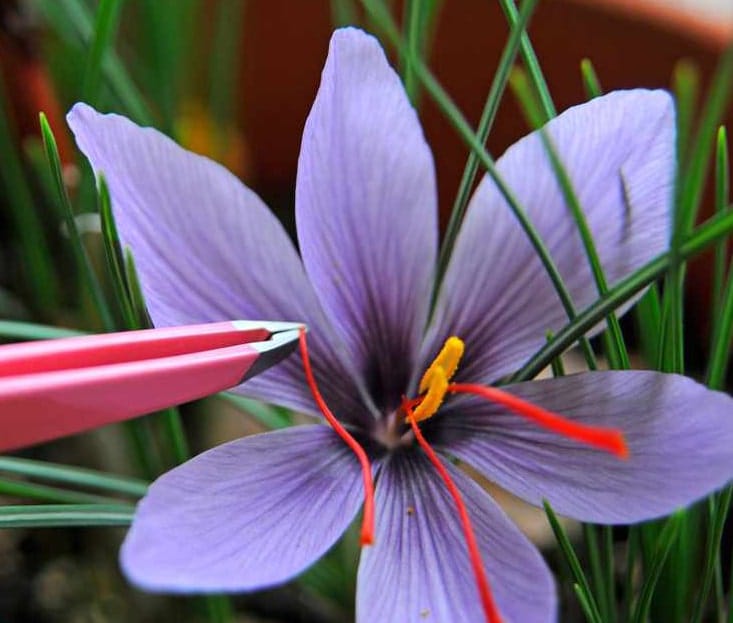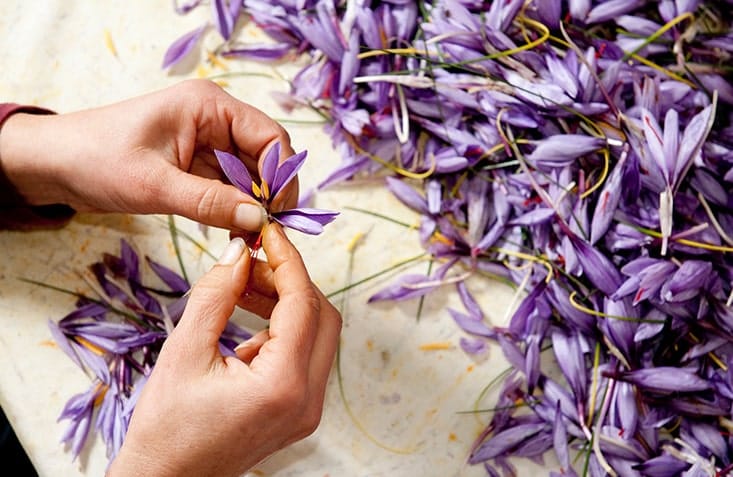
Saffron
Quick Access :
General information
General
Information :
Information :
Undoubtedly, Iran is the most significant producer of this crop in the world. In 2005, According to Wikipedia announcement Iran made 93.7 percent of the year’s global total mass. North of Khorasan Province include the remote areas of Birjand, Ghayen, Ferdows; in South Khorasan Province, grows 95 percent of Iranian saffron. Saffron harvested in the autumn. Each crocus flower produces only three stigmas at a time, hence it takes between 50,000 and 75,000 flowers to compose 1 pound of saffron spice. The high cost of saffron is because of the difficulty of manually taking out large numbers of stigmas, which are the sole part of the crocus with the expected smell and flavor. A large number of flowers have to be processed so as to supply marketable amounts of saffron.

Saffron is characterized by a bitter taste and an iodoform- or hay-like fragrance; these are caused by the chemicals picrocrocin and safranin. It also contains a carotenoid dye, crocin, that offer food an expensive golden-yellow hue. These traits make saffron a much-sought ingredient in many foods worldwide. Saffron also has medicinal properties.
Product benefits
Saffron
Benefits :
- Being a powerful antioxidant
- Improving moods
- Treating depressive symptoms
- Having cancer-fighting properties
- Reducing PMS symptoms
- Acting as Aphrodisiac
- Reducing appetite
- Aiding to lose weight
- Reducing heart disease risk factors
- Balancing blood sugar level
- Improving eye-sight in adults with age-related macular degeneration (AMD)
- Improving memory in adults with Alzheimer’s disease
- Having many therapeutic applications in many traditional medicines
- To help protecting human body from oxidant-induced stress, cancers, infections
- Acting as immune modulators
How to Harvest
How To
Harvest :
Saffron crocus is a fall bloomer with purple leaflets, yellow stamens and a three-part red-orange stigma that becomes the saffron strands. To harvest, workers cut off the open flowers at mid-morning on a sunny day. They permit all foliage to grow through winter and cultivate the plants for next year. First, they pile the flowers on a table where the workers can work comfortably. Second, remove the stigmas.


Third, they just take only the red-orange parts; the stronger the color, the stronger the flavor. Then, dry the saffron without exposing it to high heat. Small amounts can be placed on a plate. A dehydrator at the lowest setting or a screen on blocks in a warm dry room can be used for larger quantities. Saffron crocus needs full sun and very well drained soil. It is hardy to Zone 5, and it prefers hot summers, though it does not insist.
Packaging
Packaging :
We can provide saffron in each quantity that our clients want, there is no limitation regarding weight, destination and packaging type.
